Turns out, however, it’s not only 2,000-year-old works of art that grace the floors and walls of our buildings and public places. Thoroughly modern mosaics also make a prominent statement throughout Israel.
Here are 10 of the most striking modern Israeli mosaics for you to admire from a distance or, Covid-permitting, in real life.
ADVERTISEMENT
- Chagall Lounge, the Knesset
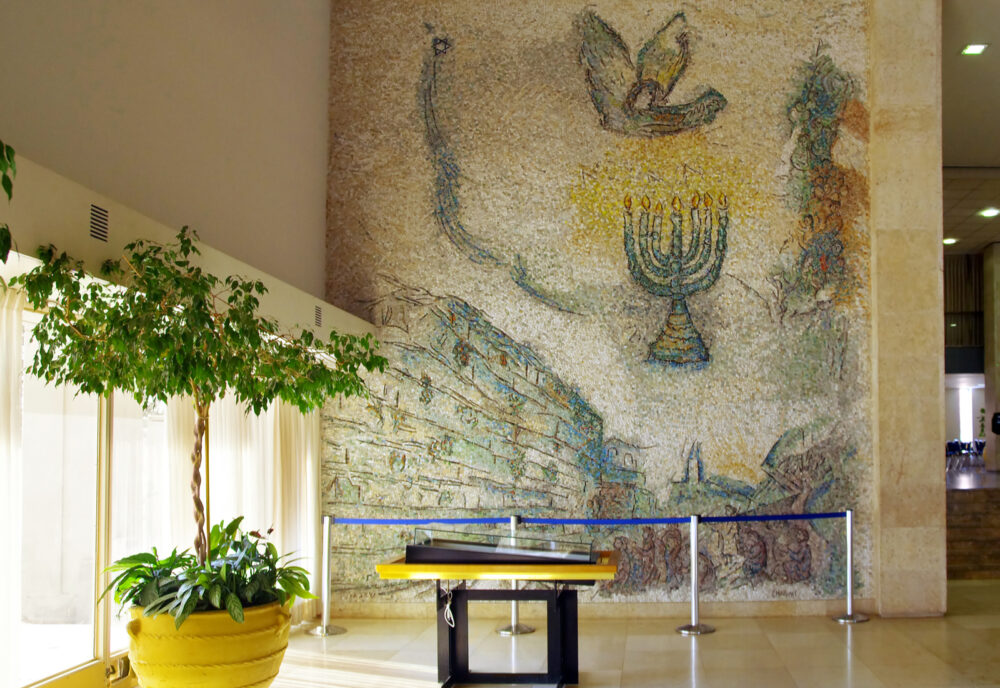
The 12 mosaics featured here, created in the 1960s by world-renowned artist Marc Chagall, boast the most prestigious setting on this list – the fourth floor of Israel’s Knesset. They borrow from the themes that appear in the ancient mosaics found in fifth- and sixth-century synagogues in the country, and as such include images such as fruit, animals and vegetation.
The stones for these floor mosaics come from all over Israel: the light-colored ones from Jerusalem, the black and brown from northern Israel and the green and blue from the Timna quarry near Eilat in the south. The yellow and orange pieces are Murano glass from Venice.
The Chagall Lounge also incorporates a big wall mosaic and three huge tapestries created by the artist.
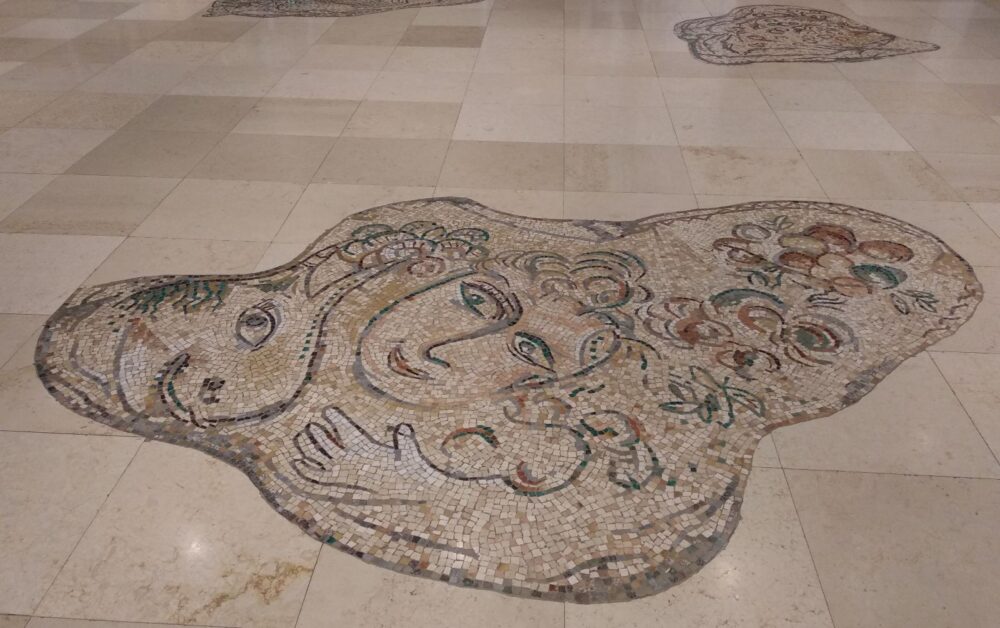
- History of Tel Aviv
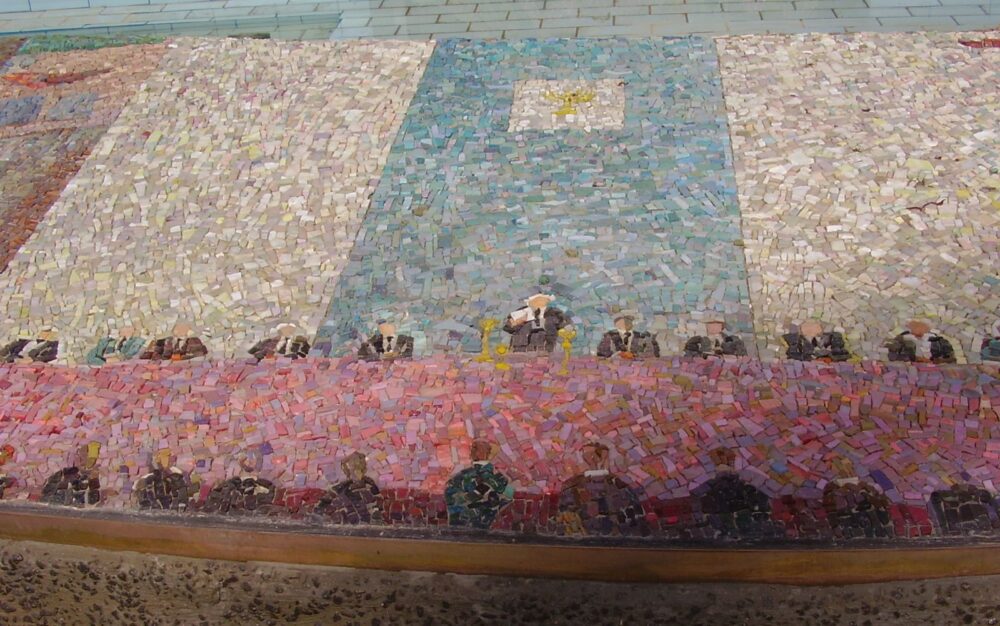
Nahum Gutman was one of the most prominent artists in pre-state and early Israel, and is especially known for his depictions of the Land of Israel. Among his many works are also many mosaics, including this one depicting the history of Tel Aviv and Jaffa from the days of Jonah the Prophet to Israel’s declaration of Independence, marking along the way occasions such as Napoleon’s sojourn to the area and the early 20th century café culture in the city.
ADVERTISEMENT
Gutman’s intricate and large-scale mosaic was originally positioned in front of the old City Hall in downtown Tel Aviv, but now stands at the beginning of Rothschild Boulevard, not far from the delightful museum bearing his name.
- The Madonnas at the Church of the Annunciation, Nazareth
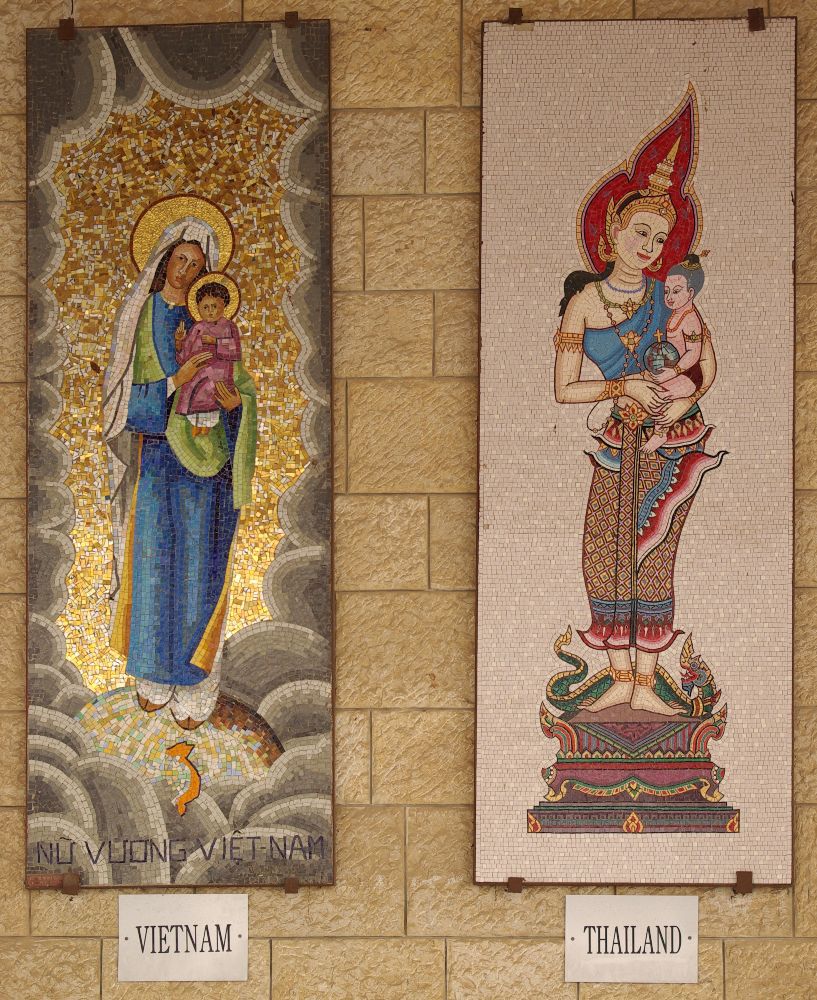
The present-day Church of the Annunciation is a modern basilica built over the remains of ancient churches marking the place believed to be home of the Virgin Mary. And since the church is relatively new, so are the mosaics that decorate it.
The church’s portico has a large display of images of the Madonna created by communities from all over the world, each representing their culture and aesthetics. Together, they emphasize the universality of faith, and make for a fascinating tour.
- Yad Labanim, Petah Tikva
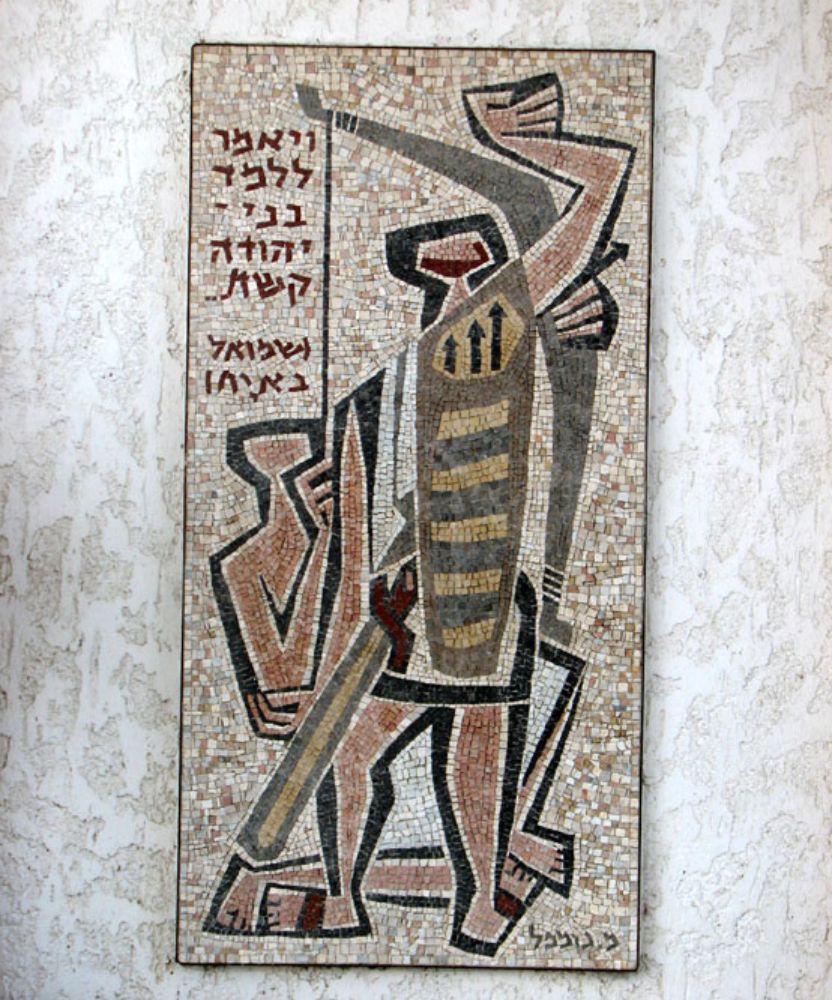
Almost every city in Israel has a public building called Yad Labanim, a memorial center for its fallen soldiers. In the central city of Petah Tikva, the Yad Labanim building is adorned by a series of mosaics created by prominent mosaic artist Mordechai Gumpel that draw on biblical scenes and stories. The mosaic shown here includes a verse from King David’s lament after the death of Saul and Jonathan, often recited at Memorial Day ceremonies.
- The Bird of Dawn, Ashdod Oil Refineries
The Bird of Dawn mosaic – top of page – is situated in a slightly surprising location – the oil refineries in the southern coastal city of Ashdod. The large and colorful mosaic, experts say, was stationed there to lift the spirits of passersby and of factory employees. It was designed by Lev Syrkin, a prominent Israeli-Russian artist who created many dozens of mosaics and hundreds of other works of art that have been displayed around the world, including some of the largest mosaics in Europe and Israel.
Check out another one of his stunning mosaics at Ben Gurion University below.
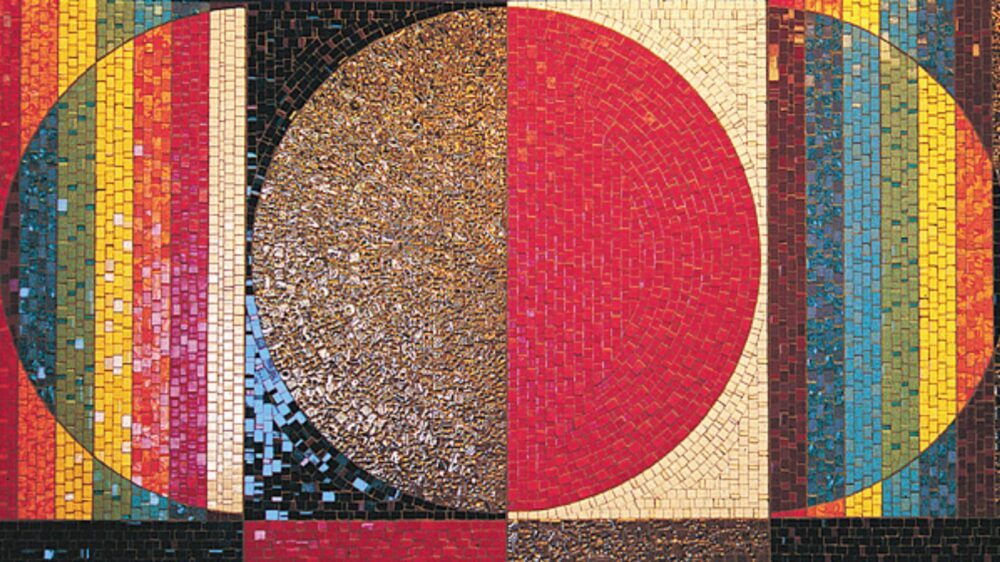
- Priestly Blessing, Tel Aviv Rabbinate
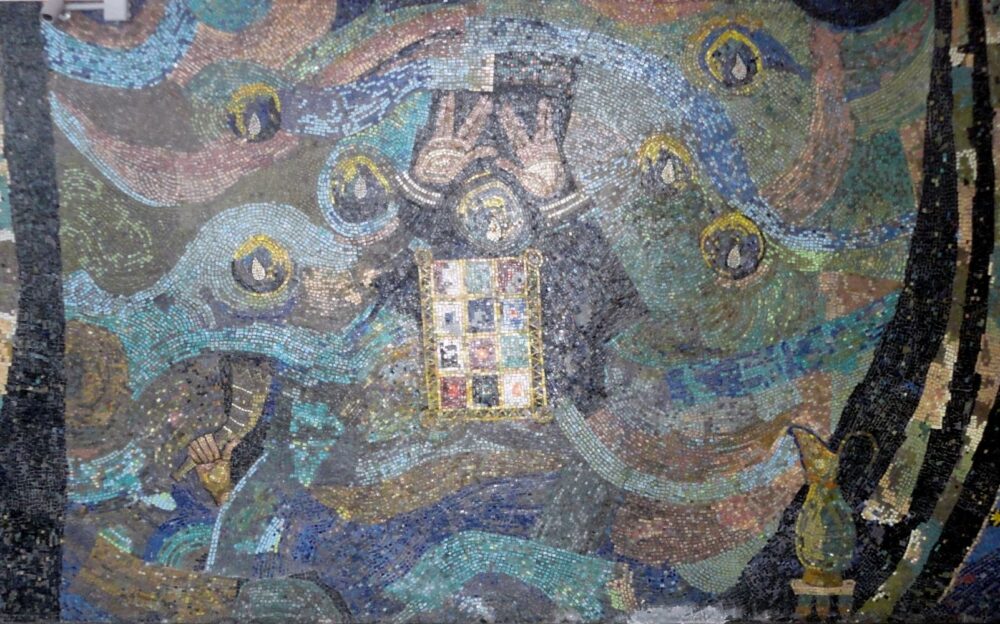
Another work of Nahum Gutman, this large mosaic depicting the Jewish Priestly Blessing hangs in the Tel Aviv Rabbinate building. The blessing involves the raising of joint hands as seen in the mosaic, where it is surrounded by other religious elements such as a shofar, the priestly breastplate of precious stones, an oil urn and seven candles representing the seven-branched candelabra. The mosaic was created in the Italian city of Ravenna based on Gutman’s plans and was erected in Tel Aviv in 1961.
- Jerusalem, the Mountains Surround Her, Mount Herzl, Jerusalem
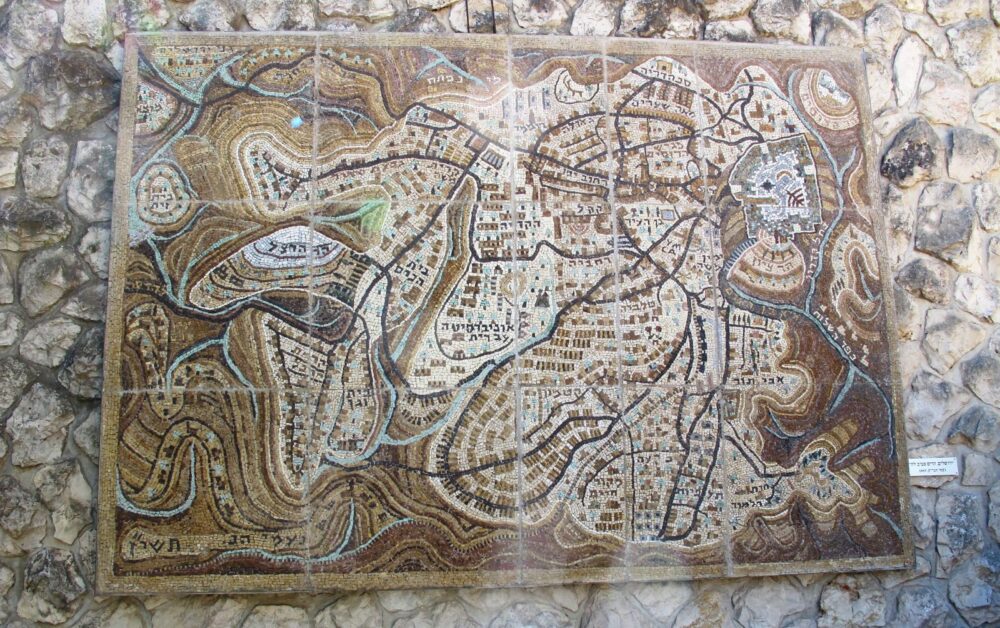
The Jerusalem mosaic that appears at the entrance to Mount Herzl in the capital was created by artist Naomi Henrik, best-known for her monument in memory of the breakthrough to Jerusalem during Israel’s War of Independence. The modern take on the city’s map includes landmarks such as the Jerusalem International YMCA, the Hebrew University campus and, of course, Mount Herzl as well as the city’s principal neighborhoods.
- Peace Wall, Jaffa
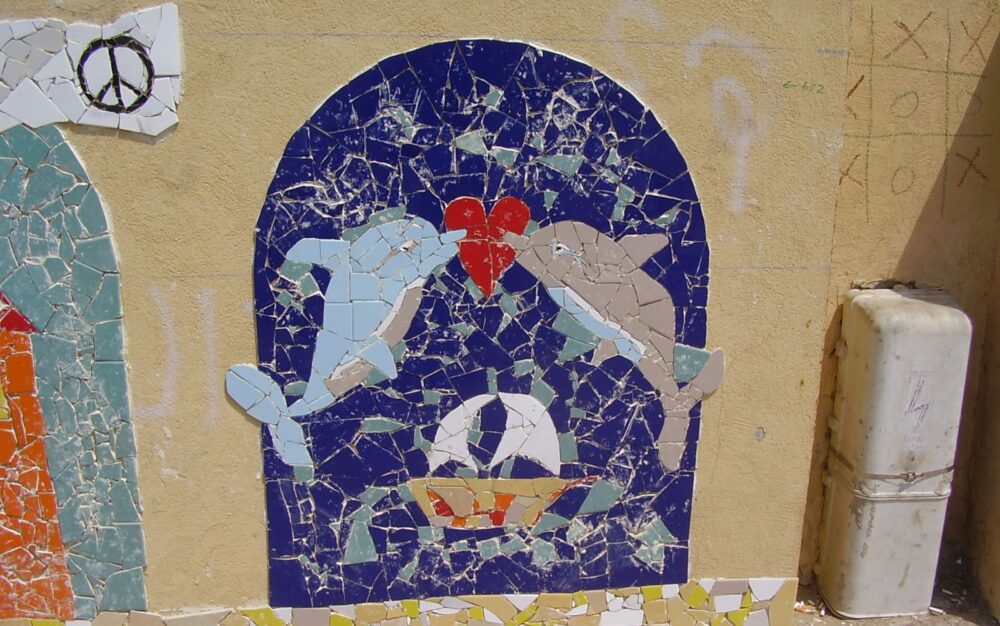
Created as part of the international CITYarts project, the Peace Wall in Jaffa’s Ajami neighborhood is the work of Arab and Jewish artists, schoolchildren and volunteer residents. It depicts themes such as olive branches, local landmarks, people shaking hands and, somewhat surprisingly, dolphins. The process was preceded by numerous workshops across schools in the area, which sought to create dialogue and cooperation between the city’s children and teens.
- Aeronautics engineering building, the Technion, Haifa
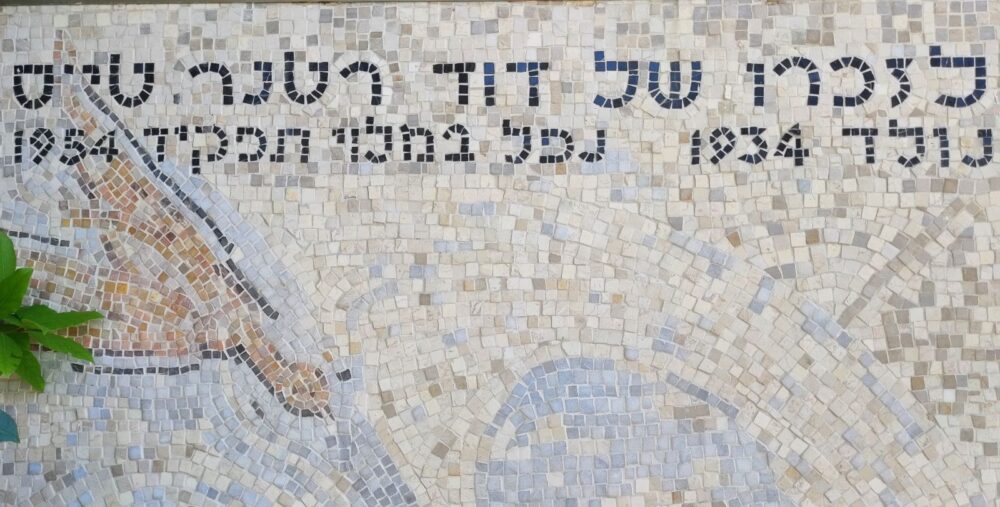
Back in the early 1950s, architect Yohanan Ratner was in the middle of the construction of the aeronautics engineering building at the Technion – Israel Institute of Technology in Haifa when his 20-year-old son, David, was killed during his military service as a pilot. Following the incident, Ratner asked prominent artist Israel Rubinstein to create a mosaic in his son’s memory. The result is the peaceful-looking and quiet work of art that adorns the building to this day.
- The Herzliya Hebrew Gymnasium mosaic, Tel Aviv
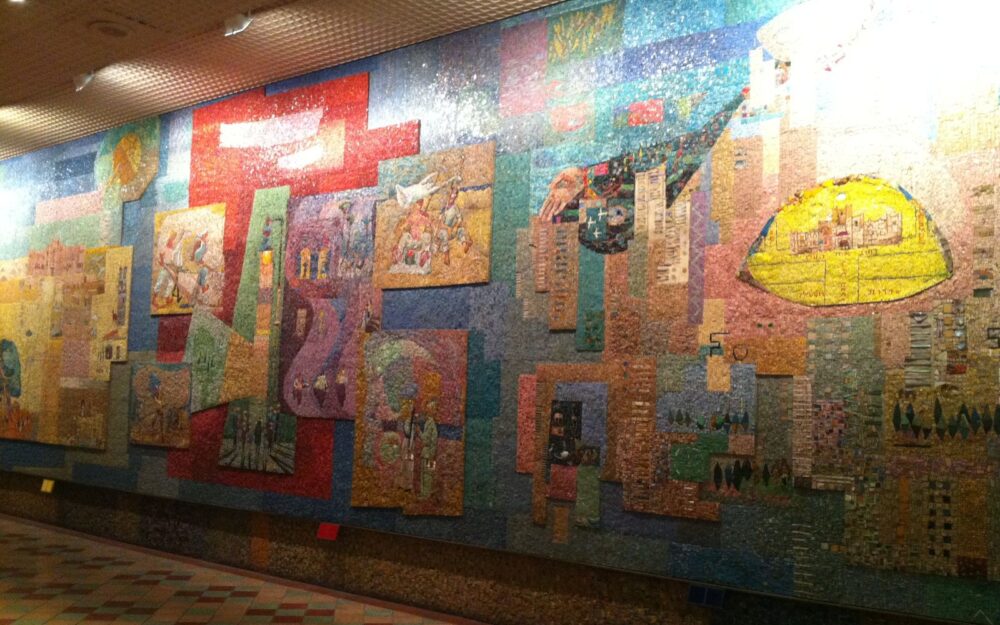
Finishing off this list is another Tel Aviv mosaic by famous city resident Nahum Gutman. The Herzliya Hebrew Gymnasium used to stand at the beginning of Rothschild Boulevard, where nowadays the Shalom Tower, well, towers. The gymnasium was founded at the turn of the 20th century and was the first Hebrew high school in pre-state Israel, boasting notable alumni including Gutman himself.
Its demolition caused quite a controversy in Israel, and the building is commemorated through this huge, 300-foot-long mosaic depicting the four stages of the city’s evolution. First appears the old port of Jaffa, followed by Achuzat Bayit, the first neighborhood of the new city of Tel Aviv. These are followed by images of the construction of the city and then its gradual growth in the 1930s and 1940s, which also feature the gymnasium.
















